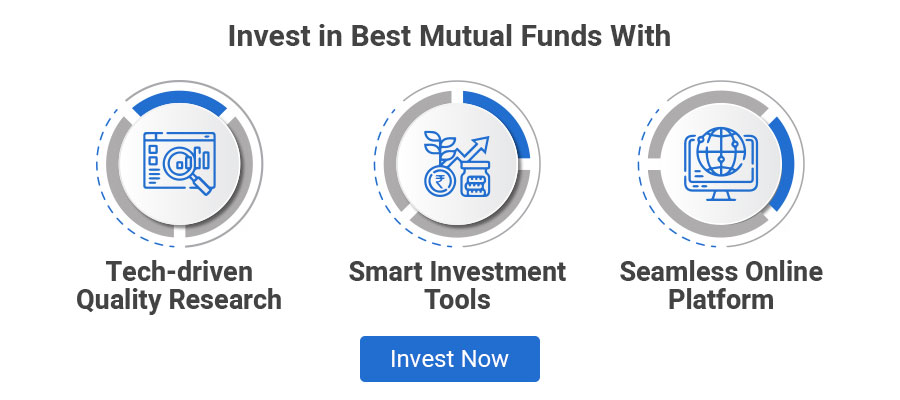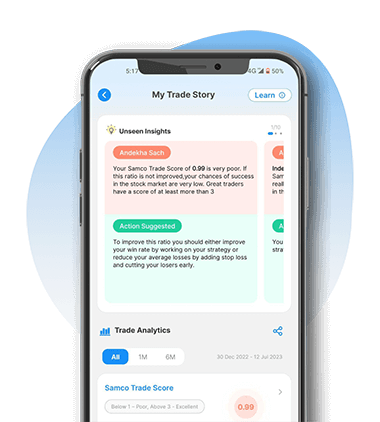Did you ever have second thoughts about investing in mutual funds whenever you read or heard the words, "Investment in mutual funds are subject to market risk, please read the scheme related documents carefully"? This isn't something a first-time investor would want to read when they begin their investment journey. So today we are going to teach you about the different types of risks associated with mutual funds, and how to tackle them head-on.
There are different types of risks involved in mutual fund investments. Before we start let us understand the what are mutual funds exactly:
Let's understand each of these risks.
Contents:
What are the risks of investing in Mutual Funds?
- Business Risks
- Credit Risk
- Interest Rate Risk
- Call Risk
- Inflationary Risks
- Liquidity Risk
- Market Risk
- Reinvestment Risk
- Social/ Political / Legislative Risk
- Currency Rate Risk
1. Business Risks:
1.What are Business Risks of investing in mutual funds?
When we address the Business risks of investing in mutual funds, we look at the risks associated with a particular security or a bunch of securities. Sometimes, when the company goes through a rough patch while trying to achieve its sales target or profit margins, or when it goes through a series of bad tactics employed by the management, it may endure significant losses, even to the point of bankruptcy. This is a common epidemic which plagues the industry from time to time.
2. How to avoid Business risks?
Of course, you wouldn’t want to lose your hard-earned money because of such an oversight, would you? So, in order to safeguard yourself from exposure to a single security, you need to diversify your portfolio of investments. And so the lesson here is - Always buy mutual which holds securities of different companies in varying weights.
2. Credit Risks:
1. What are Credit Risks?
Let’s understand this term ‘Credit’ with an example. Let’s say you borrowed some money from your friends or relatives. This money is taken under the promise of repaying it back within the next 3 days. And when you keep your promise and return it with the granted time period, this instills confidence in your character, thereby increasing your trustworthiness or your “credibility” among your friends.
Now, speaking in reference to an organization, when the company procures some kind of loan or collects debt under the onus of repaying the same within an allotted period, it is obligated in all sense to repay the amount to the lender. This contract is adhered on bond papers and is subject to legal validation from both parties involved, i.e., the borrower & the lender. But if the borrower fails to pay the principal amount or the accrued interest, or fails to meet the required contractual obligations, it is said to be defaulting on its payment. This tarnishes the credit of that company. And this is the credit risk associated with any equity company.
In India, we have a number of credit-rating agencies like CRISIL, CARE, ICRA, which determine the ratings of companies based on this criteria. Generally, a higher credit-rated company may deliver lower returns, whereas a low credit-rated company pays higher returns. So in a completely fair practice, the fund managers may allocate some part of the fund to these lower credit- rated bonds issued by such companies to increase the return value on the cumulated wealth, which may be susceptible to credit risks.
2. How to avoid Credit Risks?
Before investing in mutual funds in any fund, particularly the debt funds, please pay attention to the credit ratings of the portfolio composition. AAA ratings bonds are the instruments which carry the lowest credit risks, while D rated instruments are said to be in default or are going to default soon. Therefore it is advisable to get an adequate amount of research done on the bonds or NCD (Non-convertible debentures) beforehand.
Watch our video to know what are debt funds.3. Interest Rate Risk:
1. What are interest rate risks?
The prices of mutual fund schemes are swayed by the interest rates prevalent in the market. The prices and the interest-rate are inversely proportional to each other. With the increase in the interest rates, the prices of these securities decrease and vice-versa. Interest rates have a consequential effect on both equity and debt funds. Let’s go through them one by one.
In the case of Debt Funds:
Let's say you purchased a 10-year Government bond with a face value of Rs.1000. The coupon rate on the bond paper & even RBI’s interest rate is currently at 8%. Hence the interest payment on holding such bonds would amount to Rs. 80. The yield rate (ratio of interest received over the purchasing rate of the debt instrument), in this case, would be (80/1000)* 100 = 8%
Now let's say the RBI decides to increase the interest rate to 10%. The existing bond in the market of the same face value of Rs.1000 and a 10-year period, with the same coupon rate of 8%, loses its shimmer in the market thereby decreasing the demand for the bond. The decrease in demand of any instrument of trade eventually lowers its price. The new value of the bond product would stand at Rs. 877. In this case, the yield rate would be (80/877)*100= 9.12%. The yield figure has ballooned up considerably from the initial rate of 8%.
But if the governing bodies decide to lower the interest rates, from 8% to 7%, there will be a subsequent increase in the prices of the 8% coupon model in the market, following the increase in the demand for it, and the new yield rate formed over this bond would decrease to 7.48%
In the case of Equity Funds:
For the corporate bodies, with the rise in the interest rates, the companies curb the outgoing interest costs by borrowing less from the market. Less borrowing equals less productivity and hence lesser profits. Since the equity mutual fund portfolios comprise of companies of the varied sector, the rising interest rates are potentially destructive for the NAVs of equity Mutual funds.
This concept has another face to it. As the interest rates rise, the profits of a leveraged company are affected. This would lead to higher interest outflow and in turn diminishing the profits. To maintain a thriving profit margin for the company, it bears the burden of debt accumulation. The ‘debt to equity’ ratio is also a vital information to look at while investing in mutual funds company. As the debt portion bulks up, the profit margins shrink considerably. This causes the lenders to levy additional interest rates on the new borrowings. The more the debt exposure of any company, the higher is its overall interest rate risks.
2. How to avoid interest-rate risks?
In order to indemnify yourself from the ill-effects of an impending interest rate hike, you should put fresh money in shorter-duration debt schemes. You may park your investments in liquid funds (which have a maturity period of 91days) or ultra-short duration funds (maturity of 1 to 18 months) or short duration funds (maturity of 1 to 3 years). You may even invest in the dynamic asset allocation fund, which swaps the allocation of the wealth among equity & debt instruments, based on conscientious analysis of current or future market conditions.
4. Call Risk:
1. What are call risks?
Call risks are specific to the bond issued, and the possibility of the debt securities to be called prior to the maturity period. This too holds a close correlation between the interest rates. As the interest rates fall, the companies try to salvage the money by redeeming the bond issued with higher coupon rates and switch them out with bonds of lower coupon rate. This eventually leads to reinvestment risks. As the bonds issued by the company are recalled, you’ll receive the principal amount along with the call premium. You are forced to find a replacement bond of the same caliber with more risks saddled to it.
However, if your callable bonds are well compensated with a fair value, you can generate high returns with your debt instrument.
2. How to avoid call risks?
Your bonds are secure within the period of call protection. Call protections are the period during which your bonds cannot be redeemed under any condition. If the call protection period is for the first 4 years of the 10-year bond span, it cannot be redeemed by you for the first 4 years.
The other practice which you may set about, to eliminate the chances of call risks, is placing strategic investments in non-callable bonds.
5. Inflationary Risks:
1. What are inflationary risks?
Inflation is the rust that corrodes the value of the country's currency. It has a direct influence on your purchasing power in the market. The value of asset and income slumps with the inflation scare. For you, as an investor, the power to purchase anything in the future with the cash flow from your investment may diminish further and further down the years.
2. How to avoid inflationary risks?
The best way to steer clear of the inflationary risk is by investing in mutual funds which shows promising potential, and the ability to deliver appreciable returns over time. You may target equity mutual funds or the hybrid funds to deploy your wealth across assets and stay a step ahead of the inflation rally.
6. Liquidity Risk:
1. What are Liquidity risks?
This risk refers to the limited demands or opportunities made available to buy or sell an investment when you desire. There is paucity in the market for these trade instruments and you end up holding an investment for a long duration. The best example of such risks would be selling of NCD (Non-Convertible Debentures) in the secondary market. These funds lack the involvement of traders on a daily basis, unlike the blue-chip funds or any other established equity funds.
2. How to avoid Liquidity risks?
Only invest in funds which have a significant number of buyers & sellers in the market. High volume brands often offer better risk-aversion with respect to the liquidity issues.
7. Market Risk:
1. What are the market risks?
This is the most generic risk and affects all securities in the same manner. This is something that cannot be avoided by anyone, let alone a small-time investor such as yourself. Even diversifying your portfolio has little to no effect when the entire market stumbles down from the peak.
2. How to avoid market risks?
Although it can’t be avoided completely, you can minimize this risk through asset allocation. This is achieved by distributing one's investments across assets from dissimilar markets and segments. The lower the correlation between each asset, the more unlike the various assets will be. Hence the risk of one asset class cannot be transferred to another asset class and thereby asset allocations can be an indispensable method of reducing systematic risk or market risk.
8. Reinvestment Risk:
1. What are the reinvestment risks?
The declining interest rates have an adverse effect on the bondholders. This too holds a close correlation between the interest rates. Companies would recall their corporate bonds with higher coupon rates from the market and replace them with bonds of lower coupon rate. In such scenarios, you may have a hard time to find bonds of equivalent worth or bonds which may yield higher returns to park your proceedings. This may pressure you to purchase securities of lower credit ratings that do not provide the same income environment.
2. How to avoid reinvestment risks?
You can reduce the reinvestment risk by investing in funds with non-callable securities. You may even investing in mutual funds schemes with zero-coupon bonds as they don't make regular interest payments. Investment in bond ladder also is a viable course that you may opt for. You'll have a myriad of fixed-income securities with varying maturity dates.
9. Social/ Political/ Legislative Risk:
1. What are social/ political/ legislative risks?
Risks associated with any unfavorable government decree or any social/ national changes resulting in the loss of asset value is known as the political/social risks. The Government has the ultimate power to affect the regulating laws for any concerned security. Thus affecting its profitability and forcing the risk meter to take a swing in either direction.
2. How to avoid social/ political/ legislative risks?
Diversifying is the key to stave off such a risky setting in the market. Avoid investments in thematic or sectoral schemes at the time of such tension in the market, as it may dissolve your seed money overnight and put you in a tight squeeze for future investment.
10. Currency Rate Risk:
1. What are currency rate risks?
Change in the price of our currency too is a moving factor for the risks involved with mutual fund investments. The fluctuations in our currency with respect to the foreign ones, add unwarranted risk to the securities.
With a weakened rupee & stronger dollar values, the overseas fund/ international funds may appreciate. And if the dollar value depreciates, you'll feel the negativities brewing up in the same. This kind of risk is far greater for shorter-term investments, which do not have enough buffer-period to level off your investment in foreign assets.
2. How to avoid currency rate risk?
To mitigate the risks in foreign assets, you may take a hedged position against the overseas assets, e.g. holding counterweight positions in the domestic ETF (Exchange traded funds). This allows you to pace yourself with the market corrections and come out a victor from this turmoil.
That covers a lengthy subject of the risks involved in any mutual funds as well as the ways to circumvent it. For more useful articles on Mutual Funds, trading, investing and market knowledge, visit our Investor Education section.

(Note: This content is for information purpose only. Avoid trading and investing based on the information given above. Before investing in stocks or mutual funds, please conduct proper due diligence).






Leave A Comment?